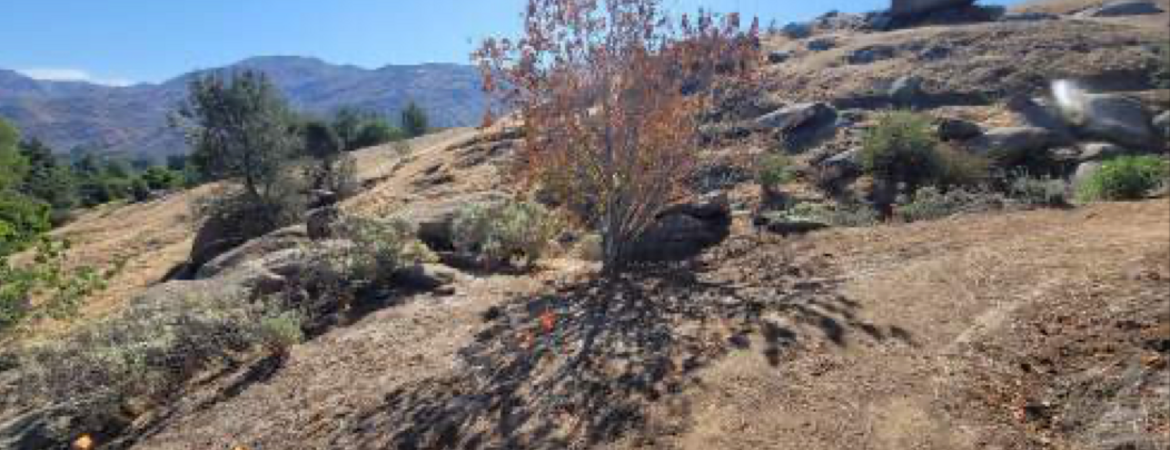
You may have noticed from the “In the Works” section, that we are working on a Native Bee Garden, which was inspired and funded by generous donations from the family of the late Dr. Martin Barnes, Emeritus Professor of Entomology. If you plan to make several visits throughout the rest of the year, I recommend you look at the work we will be doing on this installation. As of this writing we have selected the plants that will provide nectar and pollen to the native bees, we have removed weeds and some shrubs to make room for the design, and we have installed a memorial bench to rest and enjoy the view. Unlike the other themed gardens that are clustered together by our main paved road, this one is set in the interior among the rocks and hilly terrain. We wanted this garden to be nestled among other native plants, which is why we selected the northeast area of the California Sierra Foothills collection, by trail marker 23 to be more precise. The area is teeming with natives like Rhus, Aesculus, Eriogonum, Berberis, and Encelia species. We are going to introduce other natives that will provide nectar and pollen sources throughout the year. We also have plans to introduce a wildflower forage ground cover, which is an important component to any native bee garden. But before all this happens, we are going to perform major work on irrigation to ensure that this new installation thrives. You may want to take several trips and see our progress or wait until we’re closer to the end of the year to see the finished garden.
If seeing the progress of a new installation is not enticing, then I do have a plant recommendation. Right by our upper restroom there is a lovely silk tree (Albizia julibrissin). It is not quite at its maximum spread and height, but it won’t take long since they are fast growers and can put up to 36 inches of new growth in a year. It has a wider spread than height which makes for a great shade tree, expect for winter, since it is deciduous. The fine textured leaves are alternate and bipinnately compound. What is even more interesting, the leaves droop and rise as the sun exposure shifts, with the latter happening when the sun is at its highest point in the sky. I mention the leaves because the tree will probably not have many flowers in fall. However, in peak season, the tree is covered with showy pink flowers, and it is worth a look when spring comes around.